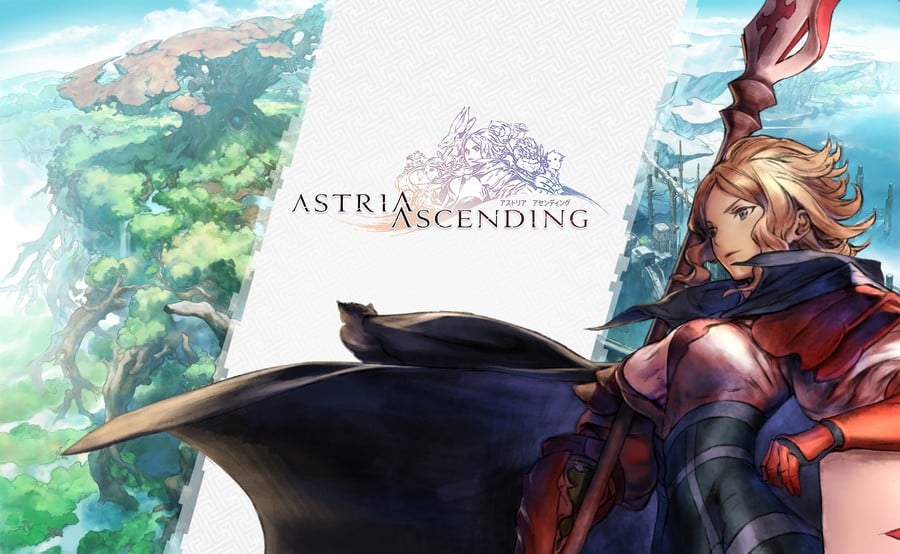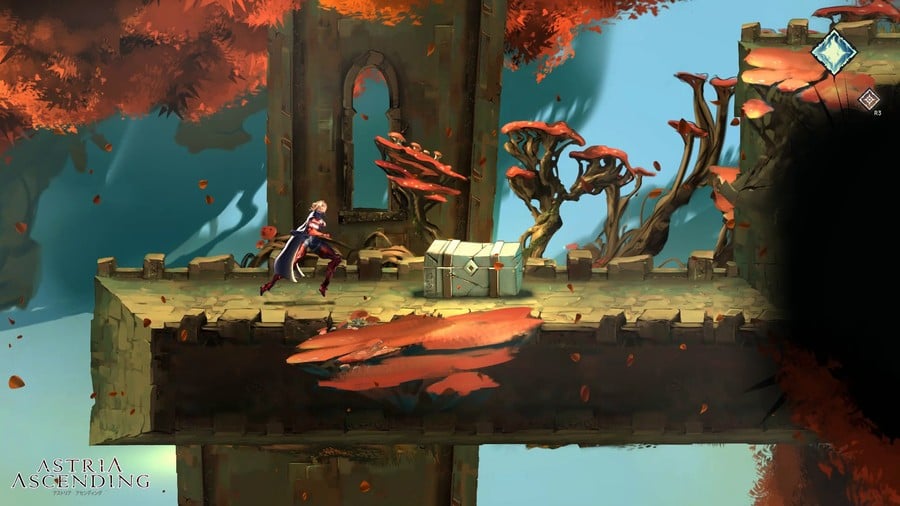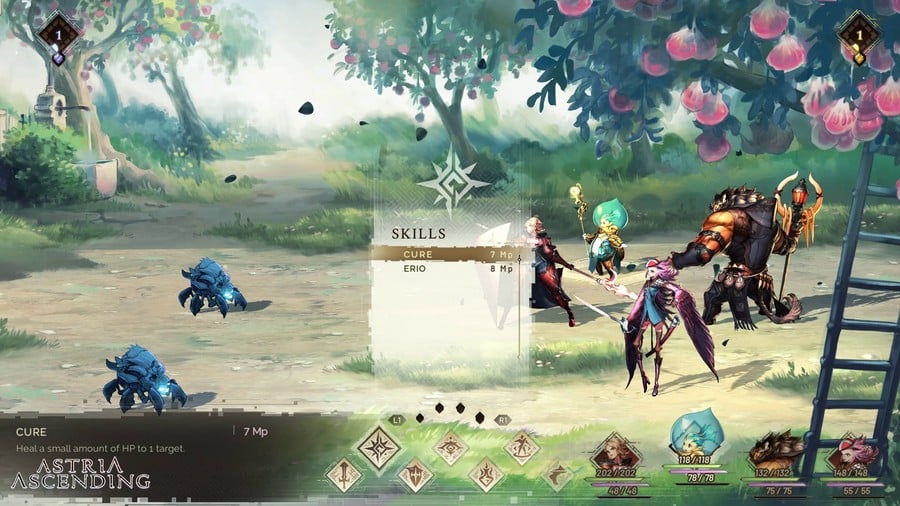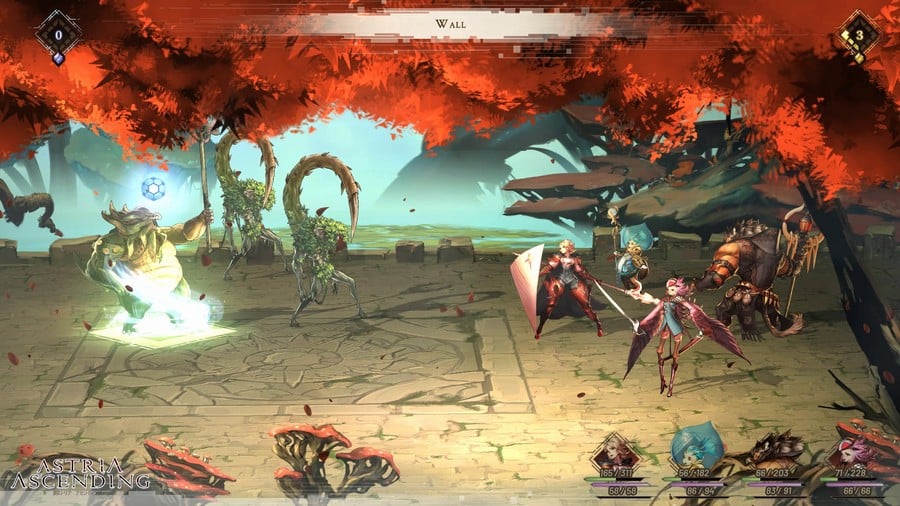Announced initially in Famitsu in March and unveiled for worldwide release shortly after, Astria Ascending is a JRPG in the classic mould that has a bevy of veterans from the genre — and the Final Fantasy series in particular — involved, including narrative by Kazushige Nojima (whose credits include Final Fantasy X and Final Fantasy VII Remake), art from CyDesignation (Akihiko Yoshida and Hideo Minaba), as well a soundtrack from composer Hitoshi Sakimoto (Final Fantasy XII, Vagrant Story, Radiant Silvergun, Gradius V, Final Fantasy Tactics, Valkyria Chronicles).
Artisan Studio is leading development on the game and we had the chance to talk with Kazushige Nojima, Hitoshi Sakimoto and Julien Bourgeois to find out some more about the game, how they got involved with the project and the challenges of cross-continental remote collaboration.
Nintendo Life: Artisan Studios is the core developer on the game, but a host of stellar JRPG veterans across several disciplines are also involved. Could you briefly outline your specific role and contributions to the game?
Kazushige Nojima: My work is to provide the overarching world view, setting and context for each character’s attributes, as well as the story and script (the in-game dialogue, for example).
Hitoshi Sakimoto: I’m in charge of the direction of Astria Ascending’s music and its composition.
Julien Bourgeois: I am the director of the game. I designed the game as well as the initial vision for it, and I’m supervising development to make sure it runs smoothly based on what we want to achieve with the project. Making a game (especially a game like Astria Ascending) is a big collaborative effort, and the main part of my role is to ensure everyone on the team has the information and answers they need to succeed within their roles.
First up, can you tell us how the idea for Astria Ascending came into being and how/when you got involved with the project?
Julien Bourgeois: Some of our team members made a game a few years ago called Zodiac Orcanon Odyssey, but we’ve been eager to take another approach with that project ever since. After creating Artisan Studios we had the opportunity to get the game’s assets back, and we thought we could make a totally new game reusing Zodiac’s fantastic character design, as we didn’t want those designs to be lost. So we started designing a brand new game and writing a completely new story for it.
Immediately we wanted the game to be fun and challenging both in exploration as well as battle, but we also wanted it to appeal to older J-RPG fans by bringing back many things they love about the genre. That was the base of Astria Ascending’s design.
Kazushige Nojima: In 2013, the team which eventually became the Astria Ascending development group contacted me and I joined this project. The story of Astria Ascending is based on the rough settings and ideas I created at that time. However, Astria Ascending’s final story has no connection with those initial ideas. Astria Ascending doesn’t even share the general settings of that initial concept.
Hitoshi Sakimoto: I became involved with this project because I was in charge of the previous title (Zodiac Orcanon Odyssey) which shares the same character design with Astria Ascending. I’m not sure how long ago that was, but I heard about the concept stage roughly five years ago. And I officially joined the Astria Ascending project two years ago.
Though the character designs are inherited from the previous game, the atmosphere of Astria Ascending is much more serious. So I try to reinforce that with music, and use the medium to bring a feeling of hope to the in-game world. This overarching direction was decided after the project started, but since there was already some sense of this “feeling” at Astria Ascending’s concept stage, this initial atmosphere would have remained even if the direction of the story was changed significantly.
How long has the game been in development?
Julien Bourgeois: The game has been in development for about 2.5 years.
You have a long, enviable list of game credits and contributions – what was it about Astria Ascending that attracted you to collaborating on this project?
Kazushige Nojima: First of all, I was impressed by the kindness and respect shown to JRPGs from game director Julian and his fellow developers. And I was eager to discover what I could achieve while making a game with a team comprised of younger talent born and raised in different countries.
I was eager to discover what I could achieve while making a game with a team comprised of younger talent born and raised in different countries.
Hitoshi Sakimoto: I like its SCI-FI setting, but above all else, I love its world view and stories. This is a story about people trying to leave something better for future generations as they navigate an age of chaos and a complex vortex of races and ideas. There must be a general theme during that process.
The story revolves around eight people – the Fated Eight, whose “fates are doomed”. We’ve read that it’ll offer a more “mature” experience, with “a story based around adult characters”. Could you tell us more about that?
Kazushige Nojima: Want to know more? Please play the game (laughs). The protagonists are called Demigods, who often reflect on whether they’re everything adults are meant to be, or even worthy of their position as a Demigod. From that perspective, I sculpted meaning around growth and the theme of “being an adult.” When you play Astria Ascending, it’s obvious that the story of the Demigods is not following mentally mature, well-educated people.
Can you explain a little about your process for creating complex plots and narratives in games like this? We’re imagining a huge board on the wall with notes, string and pins keeping track of events and characters!
Kazushige Nojima: That’s pretty much true (laughs), but all the notes and pins were inside my computer.
Tell us about the turn-based battle system and the character/team dynamic. What sets Astria Ascending apart from other JRPGs?
Julien Bourgeois: In Astria Ascending, we introduce a unique system we call the “Focus Point” system. I can’t go into too many details for now, but the system was designed to prevent a situation that all J-RPG players very commonly face.
I’m sure we’ve all been in a peculiar situation; for example, a battle where you have a magician with fire magic facing a group of enemies which isn’t weak to fire (or even worse, resistant to fire). So what would be your choices in that situation? You can do a regular attack or a fire magic attack, but that wouldn’t be very efficient, right? What is left? Should you guard, or skip that character’s turn altogether?
You get my point, right? So in Astria, the “Focus Point” system will allow all characters to be effective in every situation.
I’m sure we’ve all been in a peculiar situation […] a battle where you have a magician with fire magic facing a group of enemies which isn’t weak to fire (or even worse, resistant to fire) […] in Astria, the “Focus Point” system will allow all characters to be effective in every situation
Has work on your previous game, Super Neptunia RPG, informed your approach to this project?
Julien Bourgeois: Working on Super Neptunia RPG was a very rich experience for us. We learned many lessons that were directly useful within Astria’s development. For instance, Neptunia has a lot of voice acting and cutscenes. Astria is building from the experience we gained creating those aspects of Neptunia, so this project will make even better use of voice acting and cutscenes!
Astria Ascending features mini-games, including “shoot ‘em ups”, an “original fantasy-themed token game”, and “environmental puzzles” – could you tell us a little about these and how they fit into the overall structure?
Julien Bourgeois: I’m sorry again that I am not allowed to go too much into details on those points. What I can say is that those additional gameplays are part of the main story. But you can enjoy the game in a different way if you go beyond doing only the main quests and play those supplementary games. It is totally up to the player on how they want to approach them.
In terms of the score, do you have a specific method or ritual when sitting down to write music for a large RPG world like Orcanon? Do you look at concept art or have a build of the game to hand, for example?
Hitoshi Sakimoto: The conversation with the director and key figures of the team are most important. That’s when you can learn their unique thoughts about the project – or any projects, really. After having that conversation, I try to supplement the team’s thoughts and vision through sound. At the same time, I can also try new things and bring new challenges into my work based on their perspectives.
How collaborative was the relationship between you and the team at Artisan? Did you send musical ideas and move forward following feedback, or were you given more of a free rein to follow your instincts?
Hitoshi Sakimoto: We decided through discussions that the general collaborative process would not change significantly from the previous work (Zodiac Orcanon Odyssey). In addition, sound director Denys [Fontanarosa — Artisan Studio composer] has proposed a musical approach to evoking the game’s key themes, and we are incorporating that as well.
the conversation with the director and key figures of the team are most important. That’s when you can learn their unique thoughts about the project – or any projects, really. After having that conversation
Veteran artists Hideo Minaba and Akihiko Yoshida have also collaborated on this project. How have they contributed exactly, and what qualities do you feel they brought to Astria Ascending?
Julien Bourgeois: The main character design and the overall art direction was led and done by CyDesignation under Hideo Minaba’s supervision. We feel very proud and honoured to be able to put their actual art into the game for the player to enjoy. Artists at CyDesignation are incredibly talented and our team at Artisan Studios made sure to deliver the same level of quality in their art to realize 2D visuals the best way we possibly can.
Looking back over your long histories within the games industry, how did working on Astria Ascending compare to other projects you’ve worked on in the past? With your experience, do ideas and inspiration come easier nowadays than they used to?
Kazushige Nojima: When I got the offer to join this team, they showed me most of the gameplay outline. I was able to focus on thinking about settings and stories which included all elements of their proposed game. It’s common to start writing scenarios before game mechanics, systems, and rules have been decided. Since the content of the game will be decided later, there’s always a risk of falling into a bad situation where what the player wants to do in the game and what the main characters want to do in the story are completely different. But Astria Ascending is an exception … well, we can say it is “almost” an exception.
Hitoshi Sakimoto: Actually, the opportunity to develop a SCI-FI game is valuable; I’m a SCI-FI fan, so that naturally powers my motive. The game has some complex narrative themes, but my hope is that the soundtrack should be easy to understand, and I will do my best to achieve that.
In what ways has the global situation of the last year or so impacted development? Have you been able to meet up face-to-face at all?
Kazushige Nojima: Before the impact of COVID-19 became worse, it was assumed that development would proceed by remote collaboration. So in that sense, I think there was not much impact. Thank you, internet. It’s sad that I can’t meet the team members in person, but if I did, I wouldn’t understand what they are saying and I would have been coy. So maybe remote collaboration is the best way after all!
Julien Bourgeois: Many teams, including us, have had to revise their workflow because of the overall situation. It indeed had some impact on meetings and collaborative work. We were able to mitigate this impact with online tools and limit face-to-face meetings to only when it was absolutely required. We of course want our employees to be safe above all.
Hitoshi Sakimoto: We haven’t met even once since the beginning of 2020, but we’ve had many more online meetings, so it’s not all bad. The current global reality is a whole new situation to everyone in the games industry; I think we’re all learning how to navigate it together, in part through trial and error. But let’s do our best to see this as an opportunity to change, instead of only a difficult obstacle!
Finally, is there anything else you would like to add that we haven’t touched upon?
Julien Bourgeois: There are still core systems yet to be revealed, so please keep an eye out for news about the game in the upcoming weeks. We hope everyone will enjoy the game. We put a lot of effort into making sure the experience will be unique and appealing to all J-RPG fans!
Kazushige Nojima: At the time of this interview, I’ve only seen a few fully realized scenes from the game. They’ve been most impressive, but there seems to be a lot of work to be done. I’ll continue supporting Julian and other team members from Tokyo!
And to our fellow players, I hope you enjoy “Astria Ascending”!
Our thanks to Kazushige Nojima, Hitoshi Sakimoto and Julien Bourgeois for their time. Astria Ascending is scheduled for launch in 2021.




